Tusken Raiders are one of Star Wars’ famous faceless aliens. Since their first appearance in 1977, the nomadic aliens have built a special camp in pop culture without too much fuss. Just the odd guttural, ear-piercing screech as long as we don’t get too near.
Until recently, we knew little about the race, despite being one of the first aliens we met in the space saga. Star Wars’ recent high-profile expansion onto Disney+ has spent more time on Tatooine than any other planet. Repeat trips to that desert planet’s Dune Sea have let us know the franchise’s brutal, enigmatic survivors better.
That twin-sunned dusty world of the Outer Rim isn’t just home to the Tuskens, it’s where we first met Luke Skywalker there as he encountered R2D2, C3PO, and Obi-Wan Kenobi, despite the best efforts of the Tuskens to delay that last meeting. Years earlier, it was where Anakin Skywalker was born, where he took a child’s steps to the light side and a giant leap to the dark side of the Force. Again, the Tusken Raiders were there, experiencing the flash of deadly anger that would define the fallen Jedi’s life. From the Skywalker clan to Boba Fett and the Mandalorian Din Djarin, Tuskens have played an essential role in the Star Wars story. But do we know what they look like under those masks?
A New Hope
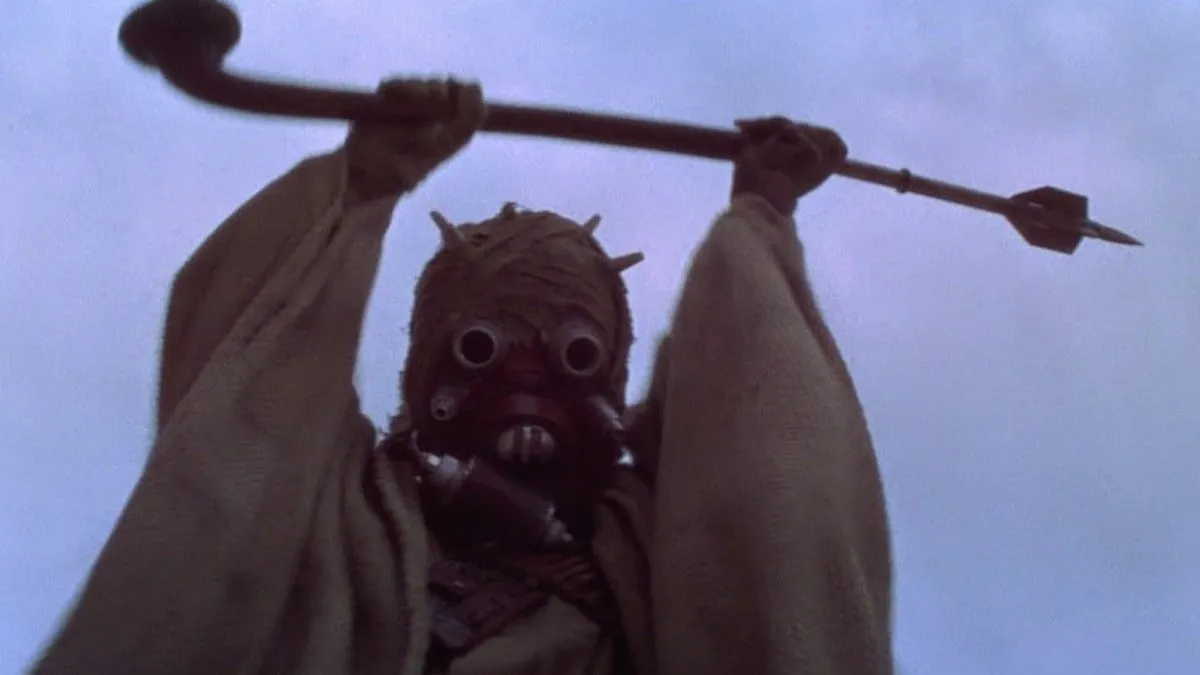
If you picked a few iconic places on Tatooine, they might include the Mos Eisley cantina bar, the Lars homestead, and Jabba’s Palace. Connecting them are vast and barren desert planes. Anything scraping a living on the sand needs protection, explaining why the plundering Tusken Raiders and scavenging Jawas are entirely covered.
It’s easy to understand why. Tusken outfits are essential to survive the harsh deserts and have served them well for thousands of years. Lore suggests that Tuskens undergo specific ceremonies of robing and bandaging as they grow. When we see a robing in The Book of Boba Fett, it is far more ritualistic than we might have suspected. As for those savage masks, the sinister goggles no doubt protect their eyes from the glare of two suns. The fixed and open mouth grills help them preserve moisture. Functional, but undoubtedly threatening – although it isn’t just their more frightening appearance that makes Tusken’s relations with other species more complex than Jawas’.
We first met Tuskens in Episode IV: A New Hope – the film’s first scare if you overlook Darth Vader’s entrance. Sand-robed, with bandaged and spikey full-head masks, they looked brutal. One took Luke Skywalker by surprise with a screech, clobbering him and dragging him off before a small group ransacked his landspeeder.
Scaring them off, Obi-Wan Kenobi describes them as hyenas – “easily startled, but they will soon be back and in greater numbers.”
Later, he levels one of the saga’s greatest insults at them when he remarks that some blaster marks must be Imperial Stormtroopers as they’re “too accurate for Sandpeople.” Less accurate than a stormtrooper? It’s a wonder the Tuskens have survived at all.
The mysterious desert-dwellers of Tatooine have captured the imagination of Star Wars fans for years. It’s no surprise then that reversing their reputation has become an aim for recent stories in that galaxy far, far away.
Under the hood

The narrow-minded dismissal of Tusken Raiders, and the unpleasant connotation of their early nickname, Sand People, isn’t one of the original trilogy’s finest hours. It created a one-dimensional threat suitable for one film, but it stuck for decades.
As Star Wars lore had it, Tatooine colonists were wary of leaving their communities because of the Raiders’ territorial aggression. Their xenophobia tended toward attacking and looting anyone near their patch. Aside from their first appearance, that was illustrated by their abduction of Shmi Skywalker, something they regretted when they met her son. But even when Anakin massacres a tribe, the Force screaming for him to stop, the audience is encouraged to agree that, at least, they were “monsters.” Recent series have shown where the mistrust comes from and how it works both ways.
The influence of Frank Herbert’s Dune on Star Wars has been felt in many ways, and the Tusken Raiders are an overt reference to the Fremen of Arrakis. Although they don’t reflect their overall culture, the expanded universe has picked up on those similarities, including their relationship with water, their planet, and other species.
If Tuskens are a bit disgruntled, it’s because The Mandolorian confirmed they’re Tatooine’s indigenous people. As the bounty hunter says, “Tuskens think they’re the locals. Everyone else is trespassing.” We’ve seen the bounty hunter communicate through Tusken sign language, befriend and share camps with the nomads, and even force an alliance with human colonists to take down a Krayt dragon.
Their reputation was further enhanced by The Book of Boba Fett, which showed how important they were to Fett’s survival following the events of Episode VI: Return of the Jedi.
Captured by a tribe, he earned their respect, learned from a female Tusken Warrior, and helped them assert their heritage against the Pyke Syndicate. Having an outsider come along to confirm their ancestral claim to the Dune Sea and innate civilization wasn’t perfect. Still, it led to something Star Wars fans never thought could happen: sympathy for Tusken Raiders.
Fett’s acceptance uncovered more about the Tuskens and their division into tribes that had been hidden ever since the oceans of Tatooine turned to sand. Despite this deep dive into the culture and the nomads’ rehabilitation, we still have no clue what Tusken Raiders look like in canon. Under the uncanonical Star Wars Legends banner, it’s a different story. The decades have brought us hints and interpretations of what the Raiders look like, some of which may one day be confirmed by the official stories.
What do Tusken Raiders look like?
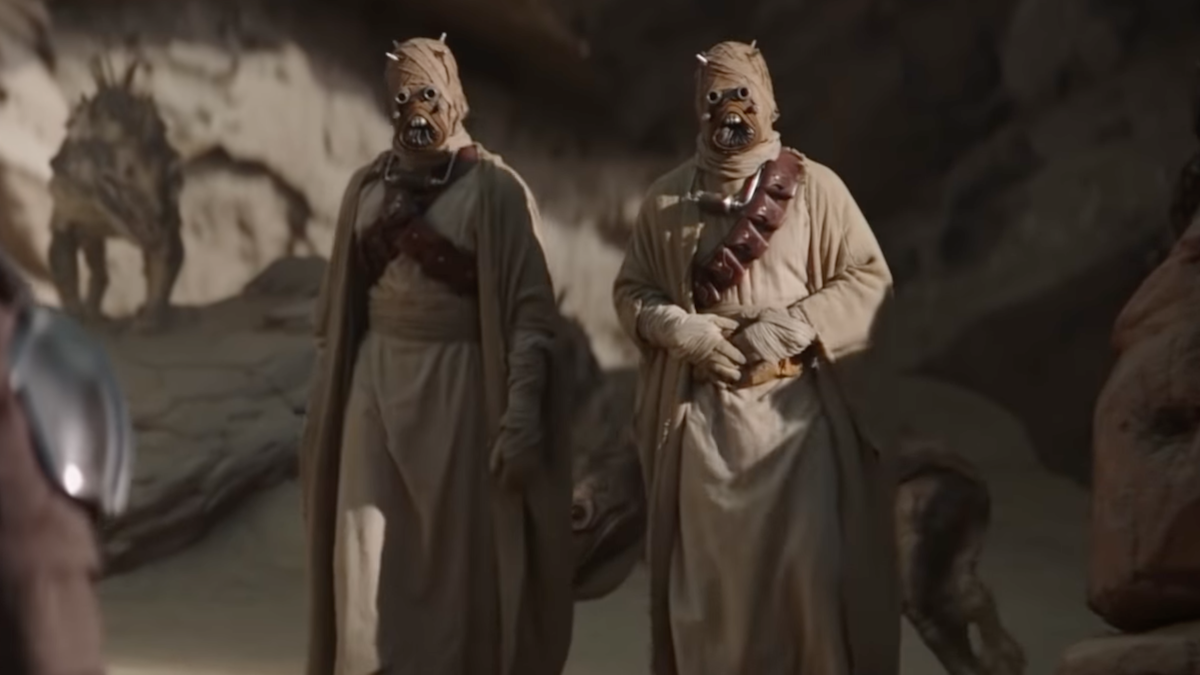
Unlike the Jawas, who manage to mix adorable cuteness with their creepiness, the Tuskens that grunt, bray, and roar through scarecrow-like robes are disturbing. It’s a safe bet that they aren’t human — unlike Dune’s Fremen — under their claustrophobic, punk outfits.
Star Wars creator George Lucas has stated that he wanted the Tuskens to combine Bedouin-like people with mechanical tech. Armed with a script that described them as sinister, concept artist Ralph McQuarrie designed them in a way that seldom changed as it was adapted for the screen.
As the Star Wars phenomenon expanded, a 1978 comic strip showed Luke Skywalker about to unmask one of the Sand People. Telling his droids, “I’m going to be the first human in 200 years to see what a Tusken Raider looks like… under his mask.” He wasn’t, and we’d have to wait a few more decades for a glimpse under the cowl.
In 1993, the Star Wars trading card game showed an unmasked Tusken, a rather fetching but surprisingly human-looking creature with face tattoos and pitch-black eyes.
Four years later, the videogame Jedi Knight: Dark Forces II introduced something unimaginable in current canon — maskless Tuskens. Known as Grave Tuskens, these mercenaries were gray, furry, and catlike. It fuelled theories that Tuskens were mammalian cousins of Jawas, which are popularly thought to be more rodent-like.
In the 2004 comic Star Wars: Republic #62, a Tusken face is revealed in one of Anakin Skywalker’s fevered dreams. It’s not a pretty sight — making it look like the masks are designed to fit over their fearsome features. However, it’s not clear when or how he would have seen one unmasked, and the truth of Anakin’s dreams is often open to debate.
A few issues earlier, Star Wars: Republic #59 had suggested there may be more than one race under those distinctive masks. Trapped behind enemy lines during the Clone Wars, one Raider removed his mask to reveal himself as Jedi Master A’Sharad Hett – later Darth Krayt. That story of integration into a tribe was later mirrored in The Book of Boba Fett. However, while that former bounty hunter was awarded robes, he never took a mask.
The Tuskens have enjoyed a more three-dimensional and developed society on Disney+ as fans have noticed the fundamental difference between individuals and tribes, not at least in their clothing. We’re likely to hear the words “savages,” “monsters,” or “animals” less and less. We’re also unlikely to see their faces, despite our greater insight into their culture.
While the Tusken mystery remains, the formidable masks of these Tatooine natives are their faces.


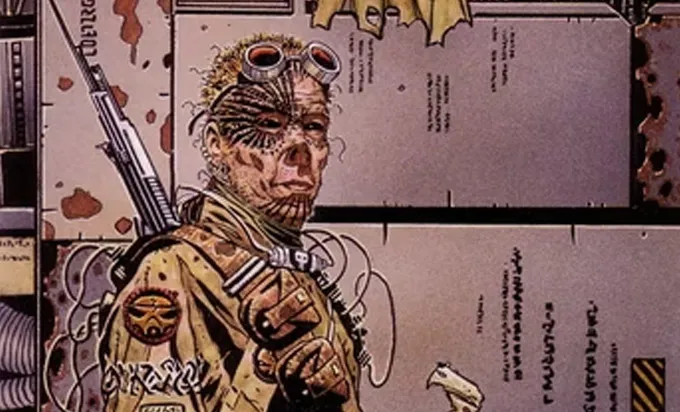
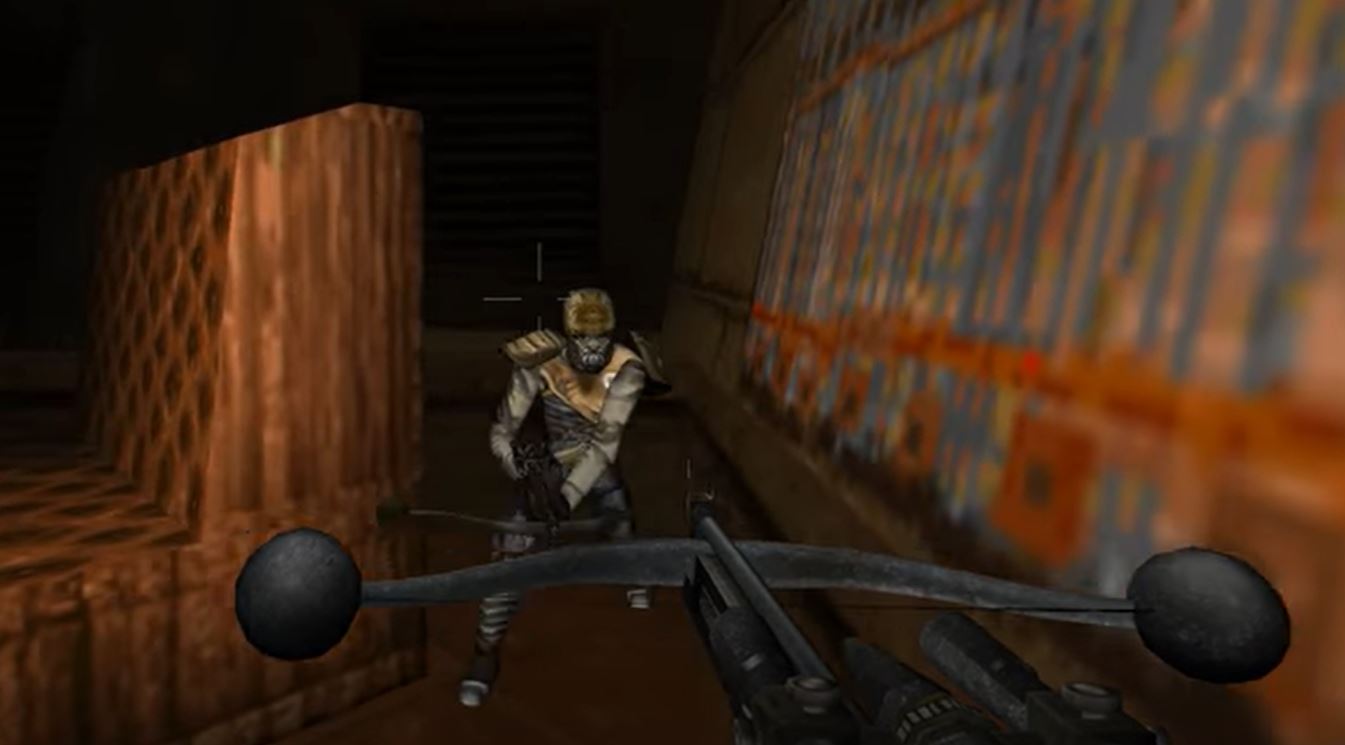
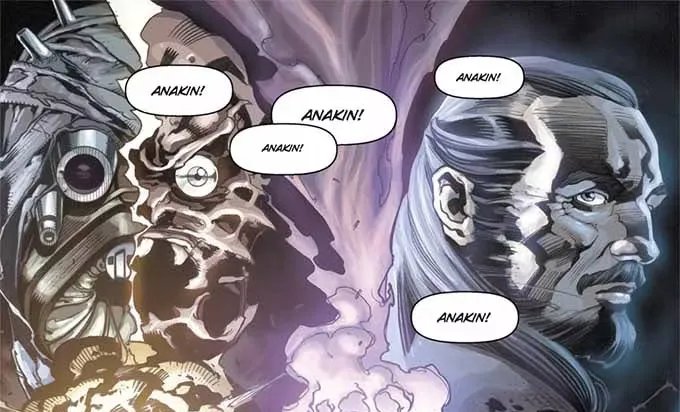









Published: Jun 3, 2022 08:48 pm